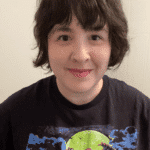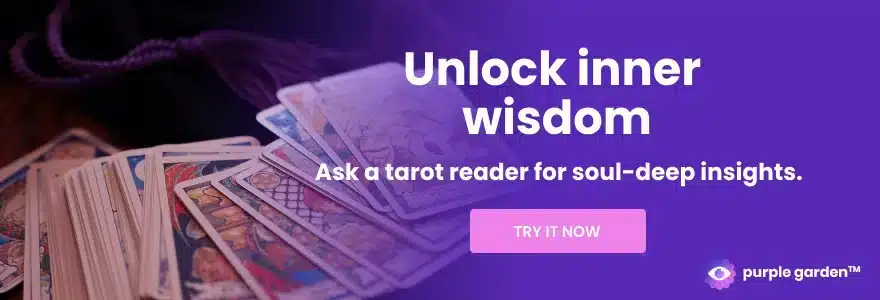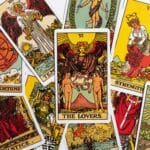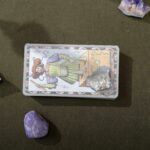Table of Contents
- Key Takeaways
- Understanding the Tree of Life Symbol
- The Ten Sephiroth and Their Meanings
- Adding Daath: The Hidden Sphere
- How to Lay Out the Spread
- Interpreting the Spread: Reading the Pillars
- Interpreting the Spread: The Lightning Flash
- The Serpent Path: Reading Upward
- Using the Tree of Life for Specific Questions
- Working with Reversals
- Questions to Ask in Your Tree of Life Reading
- Timing Your Readings
- Making the Tree of Life Your Own
- Walking the Path of the Tree
- FAQs
Key Takeaways
- The Tree of Life tarot spread places ten cards on the Kabbalistic diagram, offering a full view of your spiritual, emotional, mental, and physical life.
- Each Sephirah represents a different kind of energy, arranged along the Tree’s three pillars of active, receptive, and balanced expression.
- You can read this spread by examining the pillars, following the Lightning Flash downward, or tracing the Serpent Path upward for spiritual insight.
- You don’t need deep Kabbalistic study to use this spread, but learning basic correspondences enriches your readings.
- Set aside at least an hour for this layout so you can interpret the relationships between cards and revisit your insights over time.
If you’ve been working with tarot for a while and feel ready to explore a deeper, more mystical layout, the Tree of Life spread offers a powerful next step. Rooted in ancient Kabbalistic wisdom, this spread maps the flow of spiritual energy into everyday life, giving you a multi-layered understanding of your path, your purpose, and the forces shaping your experiences.
The Tree of Life isn’t just a layout; it’s a symbolic map used in Kabbalistic tradition to show how spiritual energy moves into form. When you work with this spread, you’re connecting tarot to a system that has guided seekers for centuries, revealing how your spiritual, emotional, mental, and physical worlds intertwine.
The Tree of Life spread uses ten cards corresponding to the ten Sephiroth (spheres) on the Kabbalistic Tree of Life, plus sometimes an eleventh card for the hidden sphere of Daath. Whether you’re drawn to mysticism, want a comprehensive life reading, or love the symmetry of this beautiful layout, the Tree of Life spread offers insights you won’t find anywhere else.
Understanding the Tree of Life Symbol
Before you explore the card meanings, it helps to understand the essence of the Tree of Life. This diagram comes from Kabbalistic mysticism and represents the journey from the divine to the material world. You can think of it as a spiritual map that shows how inspiration becomes form and how consciousness flows through every part of your life.
The Three Pillars
The Tree of Life is divided into three pillars that describe different energy qualities. Understanding how these pillars relate gives your reading a natural sense of balance and helps you see where your energy is flowing smoothly and where it may feel blocked or stretched.
- Right Pillar (Pillar of Mercy): Masculine, active, giving energy
- Left Pillar (Pillar of Severity): Feminine, receptive, form-giving energy
- Middle Pillar (Pillar of Equilibrium): Consciousness, integration, harmony
These ten spheres connect through 22 paths, corresponding to the 22 Major Arcana cards in tarot. When you lay cards on the Tree of Life, you’re working with a system where tarot and mysticism already speak the same language.
The Ten Sephiroth and Their Meanings
Each Sephirah represents a unique aspect of your spiritual, mental, emotional, or physical experience. As you move down the Tree, you’ll notice how these layers build on each other, creating a complete picture of your inner and outer world.
Upper Spheres (Spiritual Realm)
- Kether (Crown): Your highest self, spiritual purpose, or divine spark within you. Shows your ultimate potential and purest essence.
- Chokmah (Wisdom): Active force, inspiration, masculine principle. Shows creative impulses, initiating energy, or where you're called to take action.
- Binah (Understanding): The great mother, formative principle. Reveals how you process, organize, and give form to ideas. Represents boundaries and necessary limitations.
Middle Spheres (Consciousness Realm)
- Chesed (Mercy): Expansion, generosity, abundance, growth. Shows where blessings flow, areas of natural expansion, or opportunities for grace.
- Geburah (Severity): Strength, discipline, necessary destruction. Reveals where you need boundaries, what needs cutting away, or how to exercise healthy power.
- Tiphareth (Beauty): Balance, harmony, consciousness, higher self. Many readers consider this the most critical position, as it allows you to show your authentic self or core issue.
- Netzach (Victory): Emotions, relationships, desire, artistic expression. Illuminates your emotional life, creative urges, or relationship patterns.
- Hod (Glory): Intellect, communication, logic, magic. Shows your mental state, how you communicate, or where analytical thinking serves you.
Lower Spheres (Material Realm)
- Yesod (Foundation): Subconscious, dreams, illusions, astral realm. Reveals hidden influences, subconscious patterns, or the foundation underlying surface situations.
- Malkuth (Kingdom): Physical reality, material world, manifestation. Shows tangible circumstances, physical health, or how spiritual insights manifest in daily life.
Adding Daath: The Hidden Sphere
Some readers include an eleventh card for Daath, the hidden sphere that symbolizes knowledge emerging from the unseen. It often reveals what you’re ready to understand, heal, or integrate on a deeper level. Whether you use Daath or not is entirely based on what resonates with your practice.
When you include Daath, place this card in the gap on the central pillar. It often reveals:
- Hidden factors or secret influences
- Knowledge concealed from you
- Wisdom is ready to emerge from the shadows
Daath is optional; try readings both ways and see which resonates more strongly with you.
How to Lay Out the Spread
The way you place the cards matters because each position reflects how energy flows through your life. Arranging the spread according to the traditional Tree shape helps you visually track where your insights are rising, grounding, expanding, or meeting resistance.
The Traditional Pattern
- Kether sits at the top center
- Chokmah (right) and Binah (left) are at the same level below
- Down the right side: Chesed, then Netzach
- Down the left side: Geburah, then Hod
- Middle pillar flows: Kether - Daath (optional) - Tiphareth - Yesod - Malkuth
This creates a symmetrical, balanced layout that’s visually striking. You can literally see which life areas align and how energy flows through the pillars.
Interpreting the Spread: Reading the Pillars
One powerful interpretation method is examining each pillar as a unit:
Right Pillar (Chokmah, Chesed, Netzach)
Shows your active, expansive, masculine energy:
- Are these cards flowing and positive? Healthy expression of active force
- Challenging cards? Problems with initiative, aggression, or excess
Left Pillar (Binah, Geburah, Hod)
Reveals your receptive, structuring, feminine energy:
- Harmony here? Good boundaries and healthy limits
- Difficulty? Being too rigid, critical, or restricted
Middle Pillar (Kether, Tiphareth, Yesod, Malkuth)
Represents your core self and consciousness:
- These cards often tell the main story of your reading
- Shows your spiritual journey through physical journey
Compare cards across horizontal levels too. Chokmah and Binah sit at the same height, showing how your active and receptive energies interact. When cards at the same level contradict each other, you’re seeing internal conflicts.
Interpreting the Spread: The Lightning Flash
One way to interpret this spread is by following the Lightning Flash, the path that shows how spiritual inspiration moves downward into physical form. This reading highlights how ideas turn into experiences and where that process moves easily or gets interrupted.
The Descending Path
Follow this sequence: Kether – Chokmah – Binah – Chesed – Geburah – Tiphareth – Netzach – Hod – Yesod – Malkuth
This creates a narrative from spiritual purpose down to physical manifestation:
- Idea (Kether)
- Inspired vision (Chokmah)
- Structured form (Binah)
- Expansion (Chesed)
- Necessary limits (Geburah)
- Conscious awareness (Tiphareth)
- Emotional response (Netzach)
- Mental understanding (Hod)
- Subconscious filter (Yesod)
- Physical manifestation (Malkuth)
Watch for cards that don’t connect with the ones before and after them. These interruptions show where your manifestation process breaks down.
The Serpent Path: Reading Upward
The Serpent Path takes you in the opposite direction, guiding you from physical reality back toward higher awareness. This upward reading is especially powerful for spiritual growth, healing, and transformation.
The Ascending Journey
Read in this order: Malkuth – Yesod – Hod – Netzach – Tiphareth – Geburah – Chesed – Binah – Chokmah – Kether
Use this upward reading when focused on:
- Spiritual growth
- Healing journeys
- Personal transformation
- Evolution from where you stand to your highest potential
Using the Tree of Life for Specific Questions
While the Tree works beautifully as a comprehensive life reading, you can also focus it on specific questions:
For Relationships
- Kether: Relationship's highest potential
- Chokmah/Binah: Masculine and feminine energies
- Chesed: Where love flows freely
- Geburah: Where boundaries are needed
- Tiphareth: Relationship's heart and true nature
- Netzach: Emotional patterns
- Hod: Communication dynamics
- Yesod: Subconscious influences or hidden factors
- Malkuth: Day-to-day reality
For Career
- Kether: Your calling or purpose
- Chokmah: Initiative and creative force
- Binah: Structure and planning
- Chesed: Growth opportunities
- Geburah: Challenges or competition
- Tiphareth: Authentic professional self
- Netzach: Workplace relationships
- Hod: Communication and analytical skills
- Yesod: Hidden factors or office politics
- Malkuth: Concrete circumstances (salary, title, conditions)
Working with Reversals
Reversals carry meaningful nuance in this spread because each Sephirah represents an ideal expression of energy. When a card appears reversed, it simply points to a place where energy feels blocked, heavy, or in need of gentle attention. It’s not a negative sign; it’s an invitation to explore what wants healing or balance.
Common Reversal Meanings
- Reversed Kether: Disconnection from higher purpose
- Reversed Chokmah: Blocked creativity or masculine energy issues
- Reversed Binah: Excessive restriction or boundary problems
- Reversed Chesed: Hoarding or fear of expansion
- Reversed Geburah: Weak boundaries or excessive harshness
- Reversed Tiphareth: Identity confusion or lack of self-awareness
- Reversed Netzach: Emotional repression or relationship issues
- Reversed Hod: Scattered thinking or poor communication
- Reversed Yesod: Illusion, self-deception, or subconscious blocks
- Reversed Malkuth: Disconnection from physical reality
Pay attention to which pillar holds the most reversals. This indicates where your energy needs the most attention.
Questions to Ask in Your Tree of Life Reading
Because this spread is so comprehensive, the questions you choose matter. Open-ended, reflective questions invite the most insight and help you connect deeply with the wisdom this layout offers.
Questions for Spiritual Growth
Soul Purpose and Direction:
- What is my spiritual purpose in this lifetime?
- How can I align my daily life with my higher calling?
- What spiritual lessons am I currently learning?
- Where am I on my soul's journey?
Energy and Balance:
- Where is my energy blocked, and how can I release it?
- How can I balance masculine and feminine energies within myself?
- What needs healing in my spiritual body?
- How can I integrate all aspects of myself?
Questions for Life Situations
Career and Life Path:
- How does my current career align with my soul's purpose?
- What's the highest expression of my professional gifts?
- Where should I direct my energy for meaningful work?
- How can I manifest my vision into physical reality?
Relationships and Connection:
- How do I show up in relationships across all levels of my being?
- What's the spiritual purpose of my current relationship?
- Where do I need better boundaries, and where do I need more openness?
- How can I cultivate more authentic connections?
Personal Transformation:
- What parts of myself are ready to evolve?
- How can I productively work with my shadow aspects?
- What's preventing me from stepping into my full power?
- How do my spiritual insights translate into daily action?
General Guidance Questions
- What do I most need to understand about my life right now?
- What's the relationship between my spiritual life and material circumstances?
- Where am I resisting growth, and how can I surrender to it?
The Tree of Life works best with expansive, contemplative questions that invite deep reflection rather than simple yes/no answers.
Timing Your Readings
Choosing the right moment for a Tree of Life reading matters as much as the questions you bring. This comprehensive spread works best when you have time and mental space to spare. Block out at least an hour for:
- Drawing cards
- Interpreting positions
- Looking at patterns
- Documenting insights
When to Use This Spread
Many readers perform Tree of Life spreads at significant times:
- Birthdays
- New years
- Major life transitions
- Important astrological events (eclipses, solstices)
Some do this reading once a year as a spiritual check-in. Others use it quarterly to track growth through seasons. Still others turn to it only during major crossroads when they need profound clarity about multiple aspects of their lives.
Making the Tree of Life Your Own
Like all tarot spreads, the Tree of Life benefits from personalization:
- Add a twelfth card above Kether for divine will
- Place an additional card at the base for obstacles being released
- Develop sphere-specific questions that resonate with your practice
- Create a journal page for each Sephirah to track patterns over time
- Try different card selection methods
The Tree of Life is both ancient wisdom and living practice. Honor its traditional structure while adapting it to your unique spiritual journey.
Walking the Path of the Tree
The Tree of Life spread is one of the most profound ways to explore your spiritual and personal journey through tarot. It offers depth, clarity, and a view of how all parts of your life connect. Take your time with it, move gently, and let the insights unfold at their own pace. The more you work with this spread, the more it will meet you where you are and guide you toward understanding, balance, and growth.
FAQs
Do I need to learn Kabbalah to work with this spread?
Not at all. A basic understanding of what each Sephirah represents is enough to begin. The deeper meaning builds naturally the more you use the spread.
Should I include Daath in my reading?
It’s optional. Try the spread with ten cards first, then experiment with adding Daath to see which approach resonates with you.
How is this different from a Celtic Cross?
The Celtic Cross focuses on one specific situation. The Tree of Life offers a full energetic map of your life, connecting spiritual, emotional, mental, and physical layers.
What if cards seem to contradict each other?
Contradictions reveal where two parts of your inner world or life experience are pulling in different directions. These tensions often point to the most important insights.
Can I use this spread to read for others?
Yes. Just take your time explaining the structure so the person understands how the different spheres relate to their life.
How often should I do this spread?
Most people use it once or twice a year, or during major transitions, because the insights unfold slowly over time.
What does it mean if one pillar has several Major Arcana?
It reveals where major life lessons or transformations are concentrated, whether in active energy, boundaries and structure, or your core identity and life’s path.
Should I use the same deck each time?
You can, but it isn’t required. Using the same deck helps with continuity, while switching decks brings new layers of insight.











